How to Run File Explorer as Administrator on Windows 11? 4 Best Ways!
File Explorer (explorer.exe) is a Core Windows Process that Manages the Desktop and File system.
File Explorer is one of the important file management tool in windows. File manager allows you to manage and organize files and folders on your device. While managing the files and folders inside the C:drive may require additional elevated rights. For example, copying files from folder to another inside the C:drive might require admin rights for sure. In this tutorial, I have shared the 4 different methods to Run File Explorer as Administrator with elevated rights to overcome all permission based issues on you windows device.
Check Out: Run Services.msc As Administrator On Windows 11? 5 Best Ways!
Various ways to run File Explorer as Administrator on Windows 11 OS
- Use the Run Command to open File Explorer as Administrator.
- Create a New Task to run File Explorer with Administrative Privileges.
- Always open File Explorer with Elevated Permissions by creating a Desktop Shortcut.
- Run Command Prompt with Elevated Privileges and then run File Explorer on CMD.
Why File Explorer as Administrator using the Start menu is not possible?
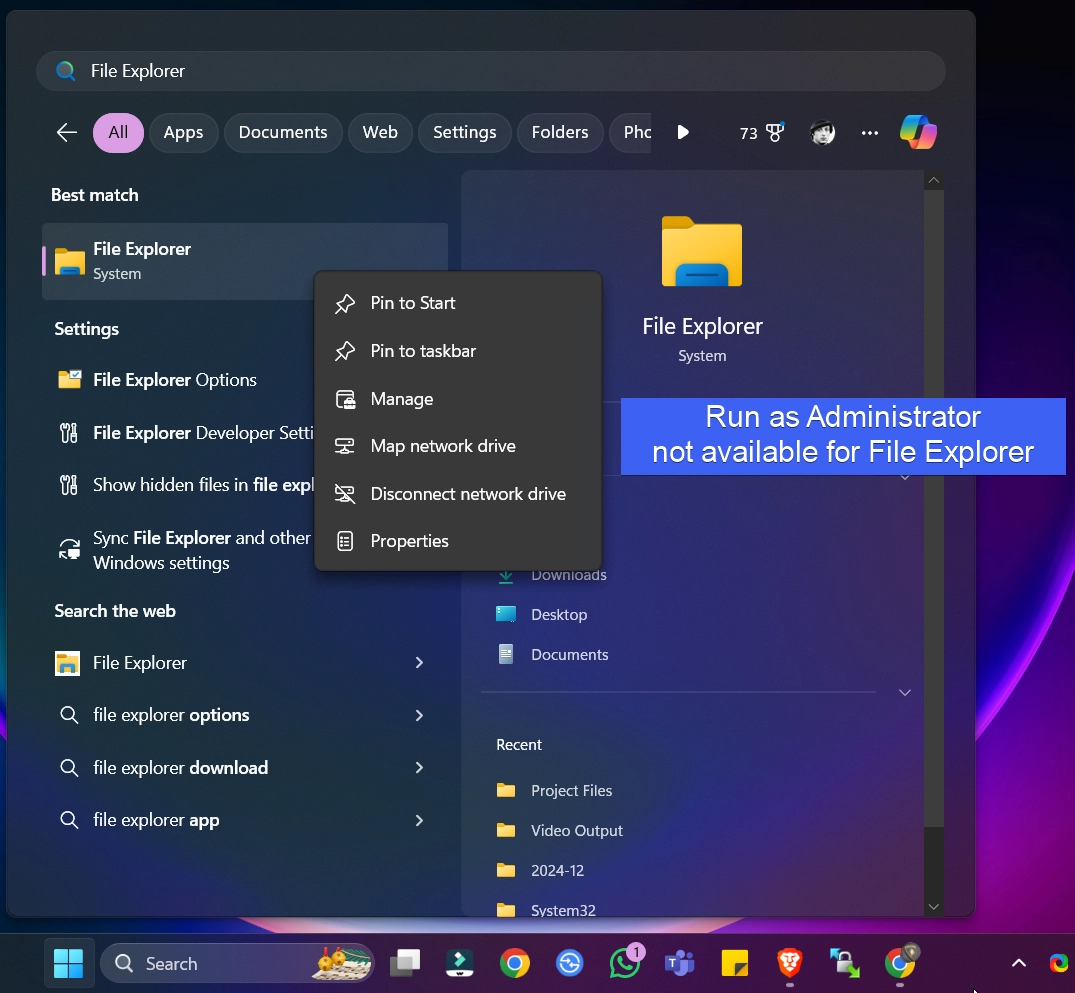
The “Run as administrator” option is not available for File Explorer in the Start menu or taskbar context menu because File Explorer is a core Windows process that manages the Desktop and File system. By default, it runs with the same privileges as the logged-in user, and Microsoft has not included a direct option to run it as an administrator for security concerns. Moreover, File Explorer is already running as the default shell for Windows. Launching a second instance with elevated privileges can cause conflicts or unexpected behavior.
IMPORTANT: Running applications as an administrator grants elevated privileges that can significantly affect your system. Please use caution when doing so, as it can lead to Unintended System Modifications, Security Vulnerabilities, Accidental Data Loss, Unauthorized Access, Irreversible Changes, etc.
#1. How to Run File Explorer as Administrator using the Run Command?
This is the quickest way to open Explorer.exe with Administrative Privileges. Here are the steps.
- Go to Run Command using the shortcut WinKey + R.
- In the Run Command, type the command
explorer.exeand press CTRL + SHIFT + ENTER.

- The System (User Account Control) will prompt for your confirmation and open Filer Explorer as Administrator.
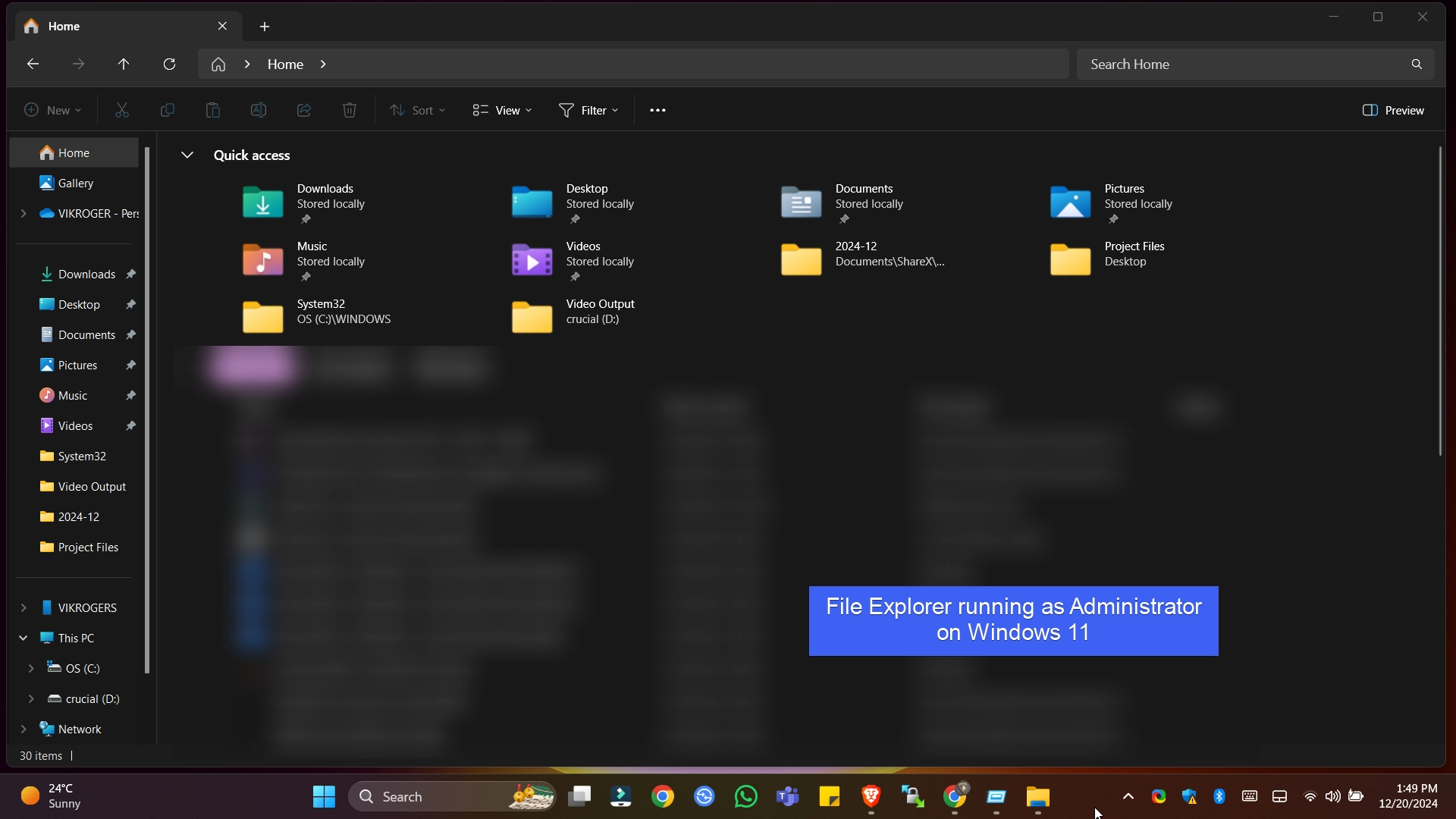
#2. Create New Task to run File Explorer as Administrator using Task Manager
- Open Task Manager using the the key combination CTRL + ALT + Delete, or you can just right-click on the taskbar and click Task Manager.
- Under Processes tab, click on Run new task. Create New Task dialog will open now.
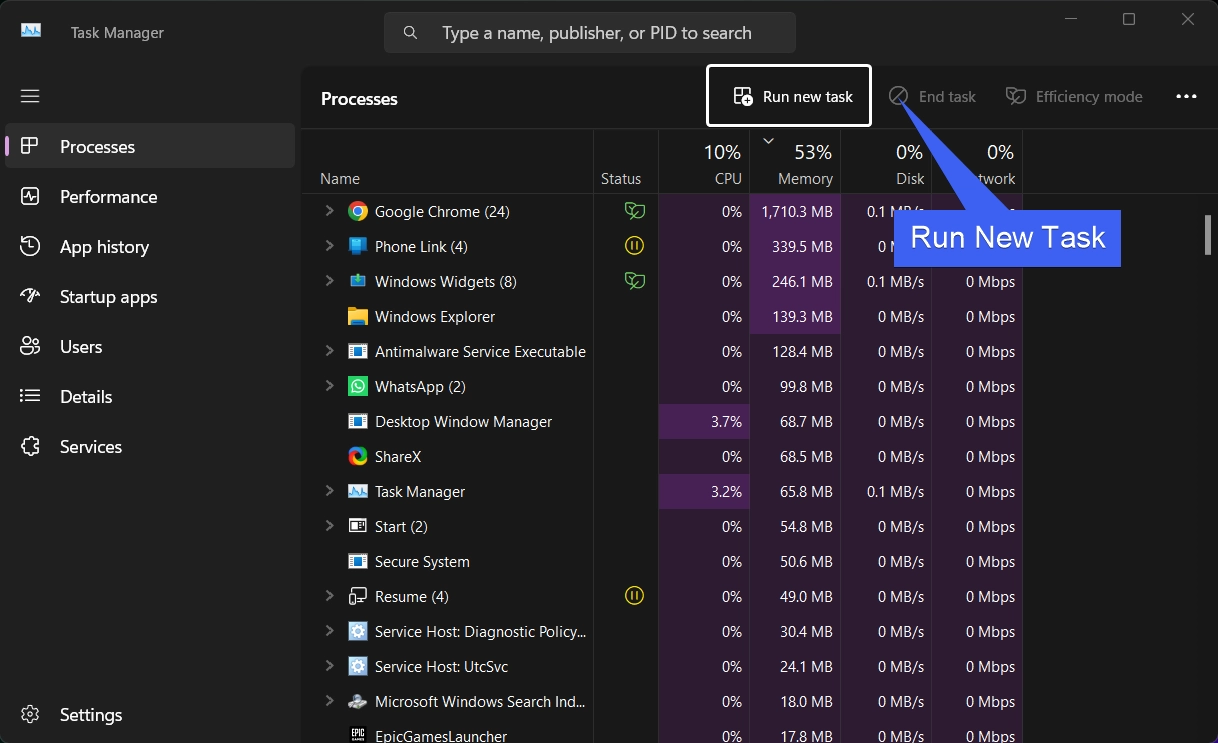
- In the Create New Task dialog, Enter the command
explorer.exeand click on the checkbox “Create this task with administrative privileges“. Click OK.
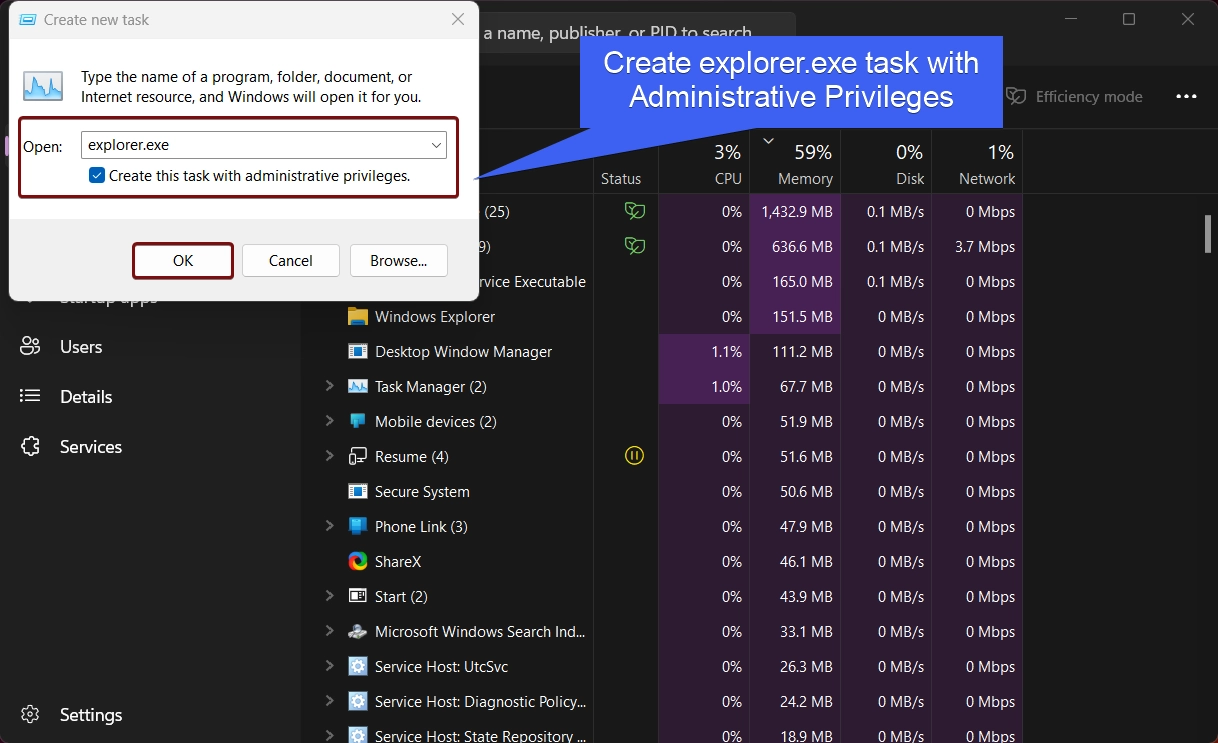
- This operation will open explorer.exe with elevated Privileges on Windows 11.
#3. Always open File Explorer as Administrator by creating a Dedicated Shortcut on Windows 11
- Right-click on the Empty space of the Desktop, and then click New > Shortcut.
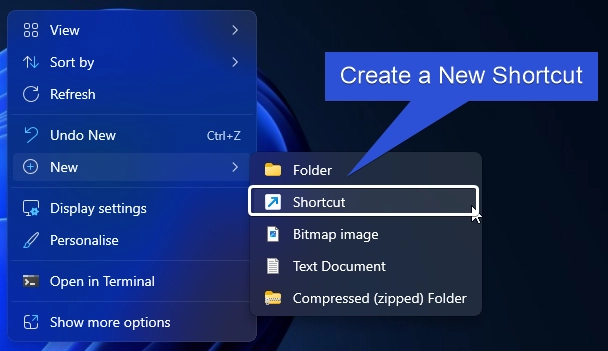
- The create Shortcut dialog box will open now. In Type the location of the item, type the command
explorer.exeand then click Next.
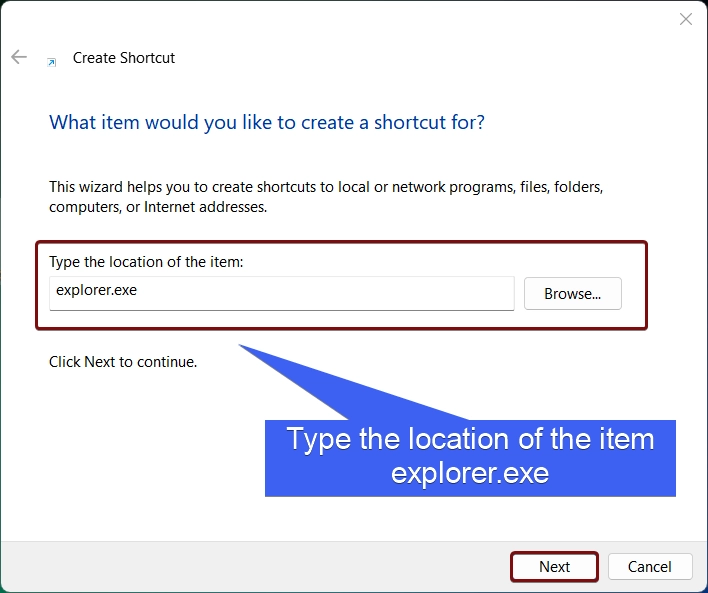
- The system will assign the Shortcut Name as explorer. You can change it as per your convenience. Click Finish to complete the Shortcut creation process.
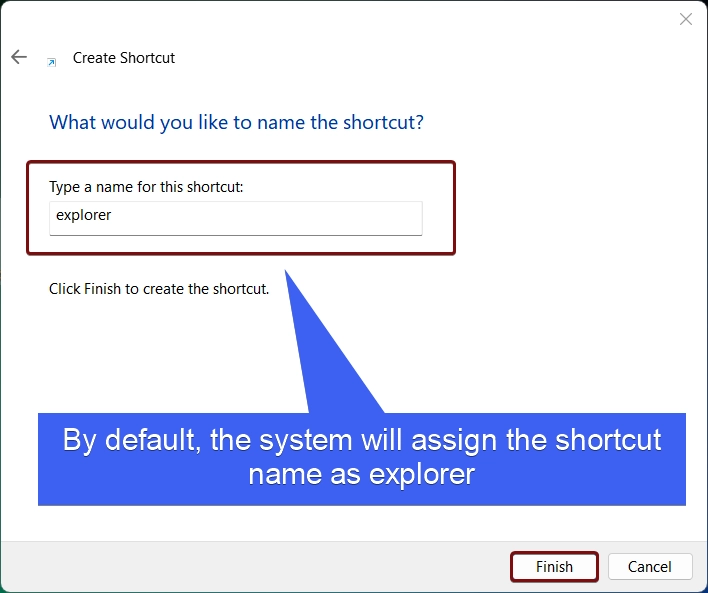
- File Explorer Shortcut will now be created on the Desktop.

- Right-click on the File Explorer shortcut and click Properties.
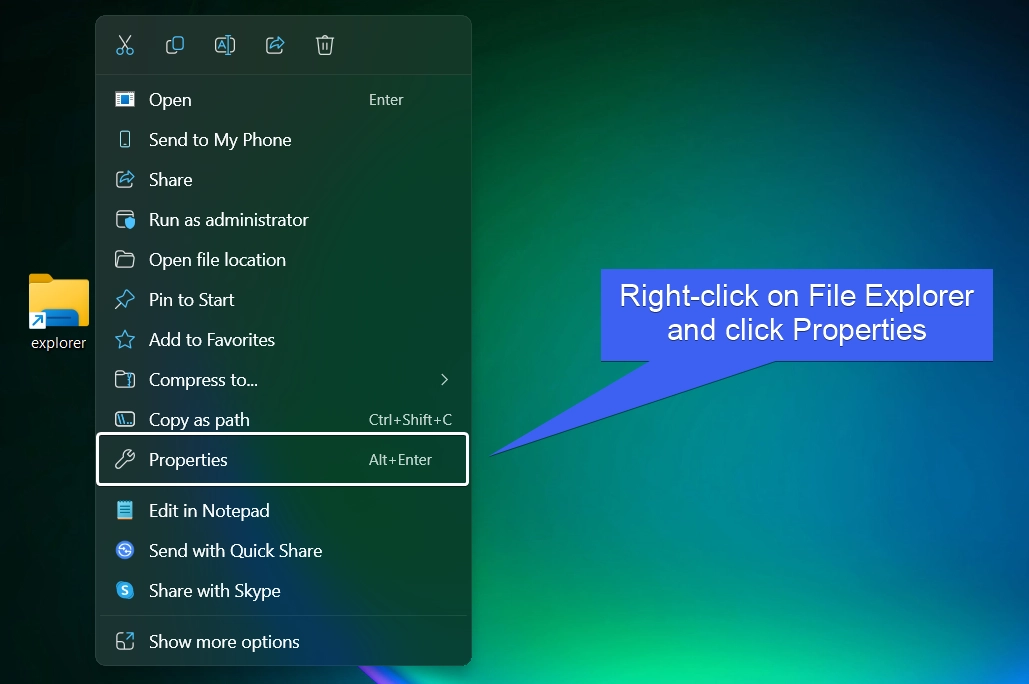
- The File Explorer Shortcut Properties will open now. Click Advanced.
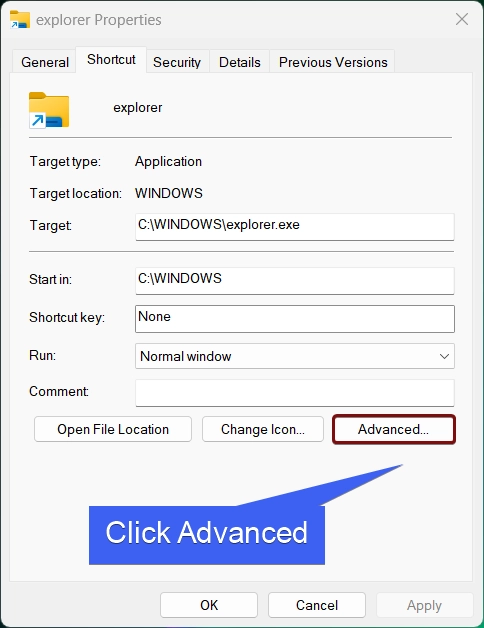
- In Advanced Properties, enable the checkbox to Run as Administrator. Click OK, and then Apply.
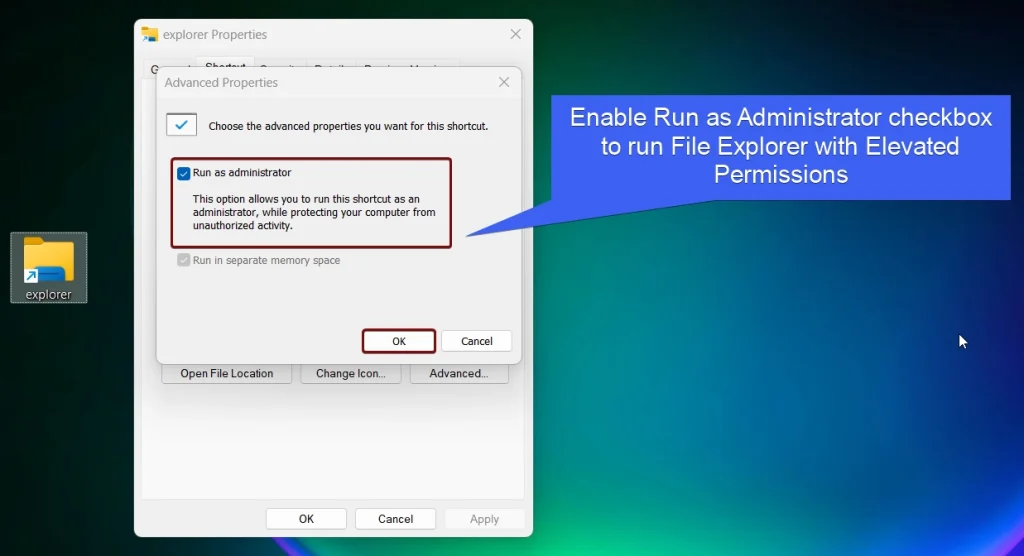
- UAC will prompt your confirmation, and run File Explorer with Administrative Privileges.
#4. Run Command Prompt as Administrator and then open explorer.exe with Elevated Privileges
This is quite a work around. Certain Features and options on Windows will not have the options to Run as Administrator directly. In such cases, we can run Command Prompt or Windows PowerShell and try opening those features and options with Elevated Permissions.
- Open Run Command and type cmd and press CTRL + SHIFT + ENTER.
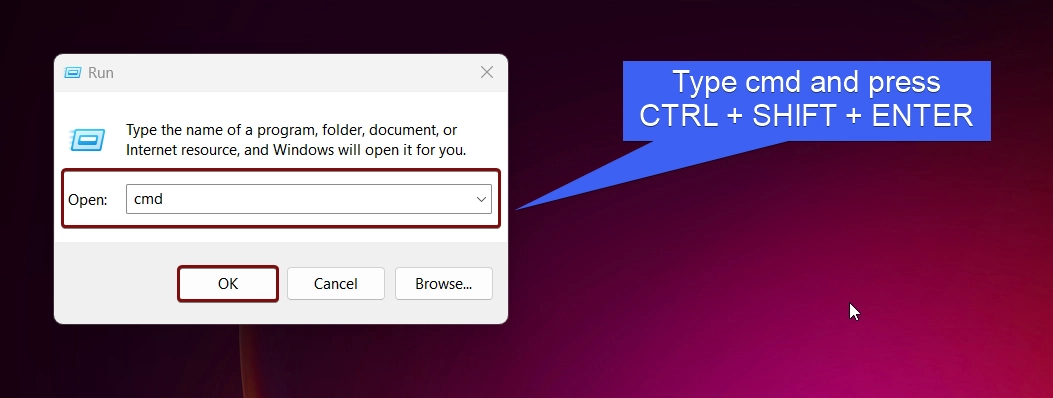
- UAC will confirm and then open Command Prompt with Administrative Privileges.
- In the CMD, execute the following command. explorer.exe
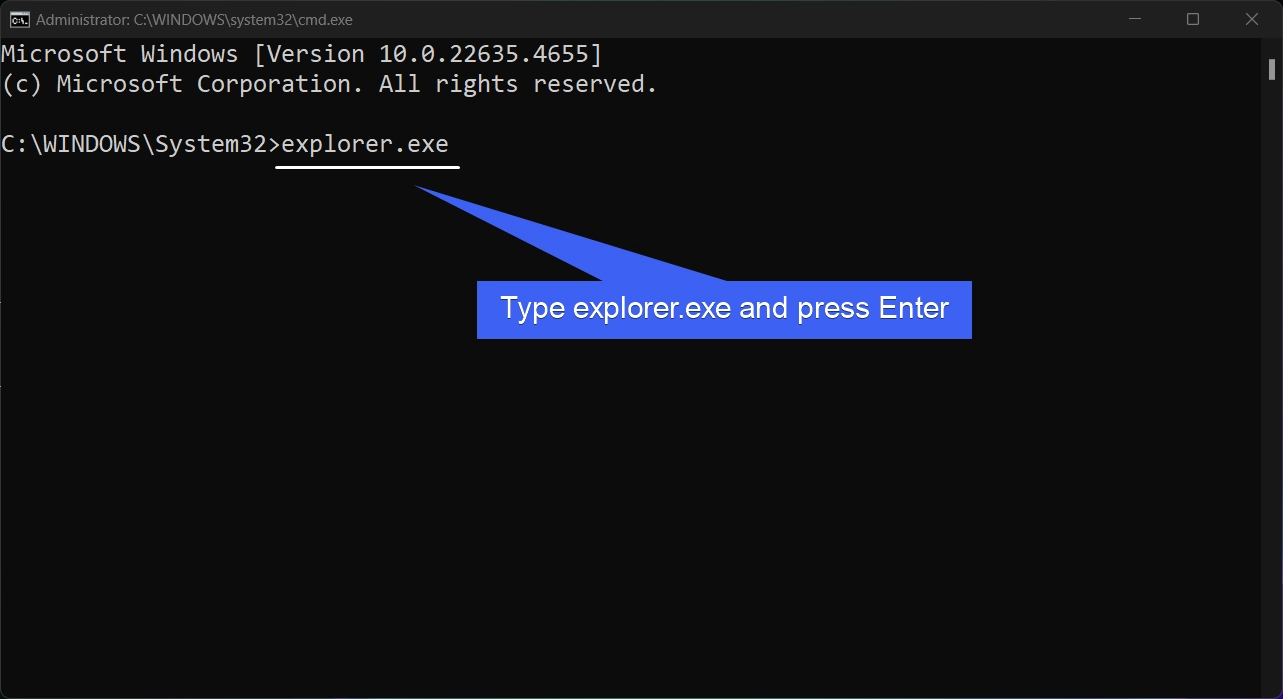
- The System will now open explorer.exe with Elevated Permissions.
Kindly be cautious while running an App as Administrator
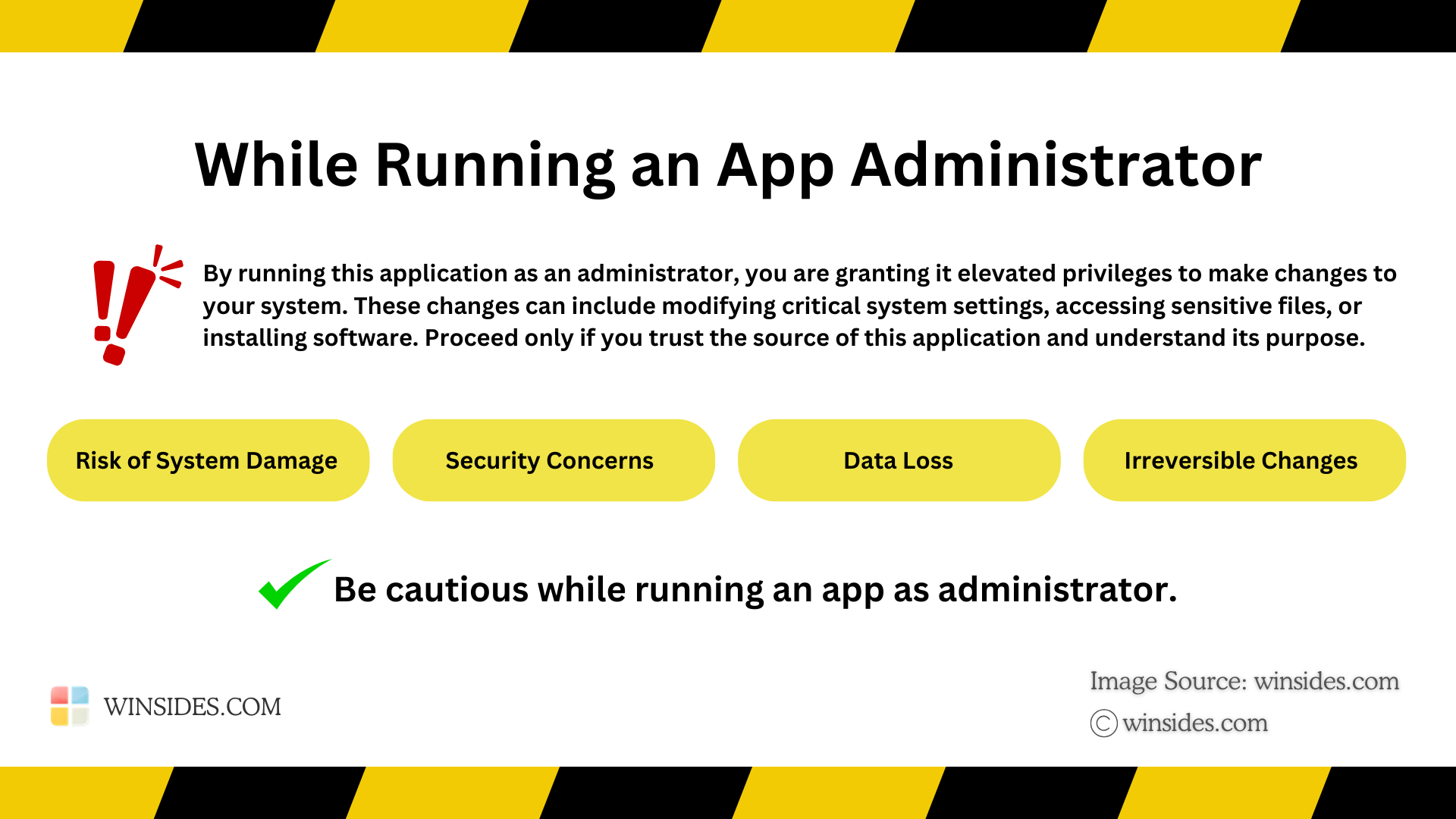
Running File Explorer as Administrator on Windows 11 grants it elevated privileges, which can potentially bypass system security restrictions. Please proceed with care and only run trusted applications in this mode. At Winsides.com, we advise our users to use Administrator privileges only when absolutely necessary to perform tasks requiring elevated rights. Misuse of administrative privileges may lead to System Vulnerabilities, Data Loss, System Instability, Security Concerns, Irreversible Changes, etc.
Take Away:
Running File Explorer as an administrator on Windows 11 is essential for tasks that require access to protected files and directories. Whether you use Task Manager, Control Panel, Command Prompt, or create a custom shortcut and the process is quick and easy. I recommend you to use the method 1 or 2 for quick accessing of File Explorer with elevated admin rights! If you have any queries related to the above topic and then feel free to comment us below. Find more informational tutorial on WinSides.com.
Read This: Run Telnet Client As Administrator On Windows 11? 4 Easy Ways!
Related Articles:
- How to Run Services.msc as Administrator on Windows 11? 5 Best Ways!
- How to Run Telnet Client as Administrator on Windows 11? 4 Easy Ways!
- 3 Easy ways to Run Microsoft Outlook as Administrator on Windows 11
We combine expert insights with user-friendly guidance. We thoroughly research and test everything to give you reliable and simple to understand tech guides. Please take a look at our publishing process to understand why you can trust Winsides.



